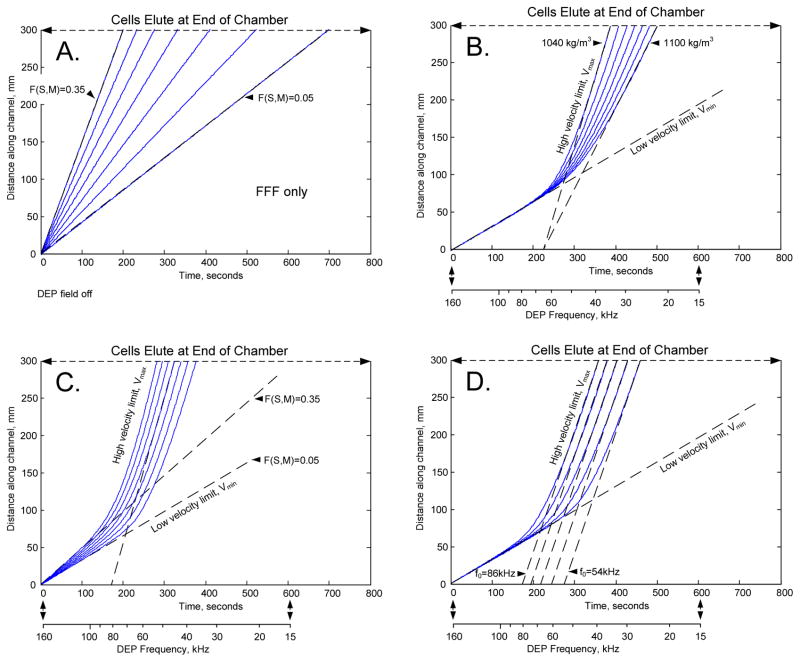Fig. 5.
Simulations of the progression of a cell through a DEP-FFF channel under different experimental conditions. (A) With no DEP field, cells move by conventional sedimentation-FFF at a height determined by the balance of sedimentation and HDLF effects. Changes in the hydrodynamic geometry function F(S, M) impact the height and corresponding velocity with which cells travel. (B – D) Simulations of cell progress during a logarithmically-programmed sweep of the DEP field frequency from 160 kHz to 15 kHz over 600 seconds. At short times the DEP frequency greatly exceeds the cell crossover frequency f0 and cells move at minimum velocity Vmin. Later, cells move faster as the swept frequency passes through f0. At still longer times the DEP frequency has fallen far below f0, and cells moves at maximum velocity, Vmax. (B) Increasing the cell density ρp decreases the maximum velocity Vmax but leaves Vmin unchanged. (C) Increasing the hydrodynamic geometry function F(S, M) increases Vmin but leaves Vmax unchanged. (D) Increasing the crossover frequency f0 leaves Vmax and Vmin unchanged, but increases the time at which the transition of the velocities occurs.

